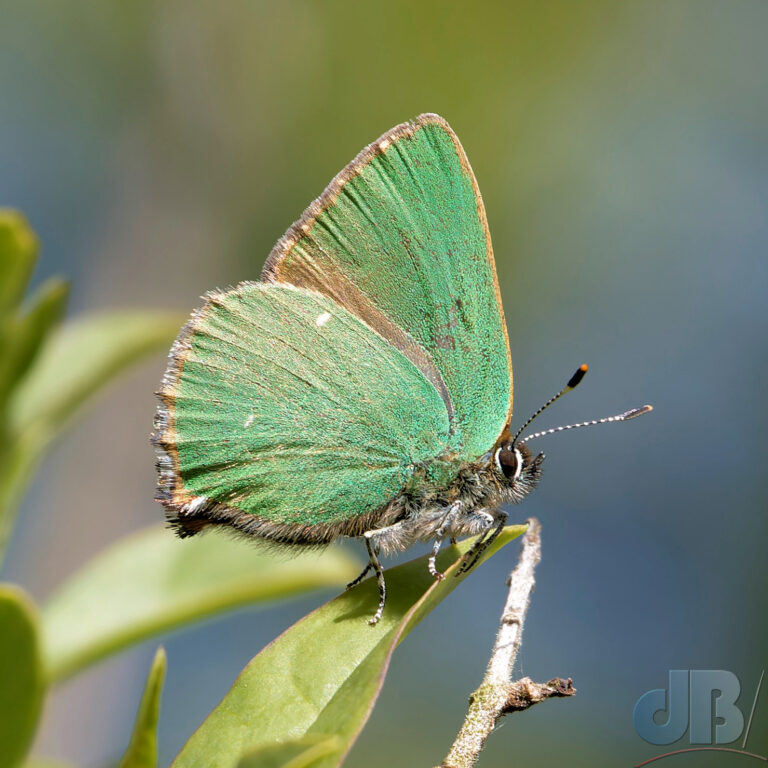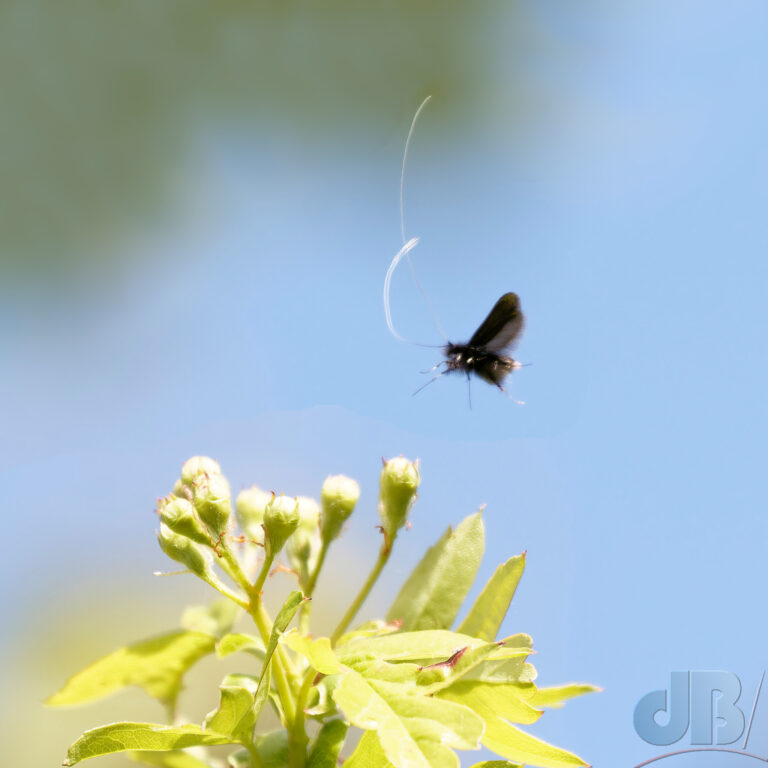TL:DR – Using photo editing tools to get the most out of your butterfly photos.
It is Green Hairstreak season. I’d heard that this tiny, shimmering green butterfly had been spotted on Devil’s Dyke in Cambridgeshire in mid-April, so I headed out on foot to a local woodland patch that very day where the butterfly had been seen a couple of years ago. I was in luck! One specimen showing briefly. Unfortunately, I didn’t get a photograph on that visit.
Next bright, sunshiny day headed out with Mrs Sciencebase to take another look. There were none on the expected patch, but we kept at it and rounded a corner where there was a Dogwood thicket and various other bushes with a crowd of Green Longhorn moth! So I got a couple of snaps of those.

Mrs Sciencebase spotted the first Green Hairstreak landing. And so with a little bit of patience I managed to get a few overexposed snaps. Using a new second-hand lens (Canon EF 75-300mm lens, 1:4.5-5.6 L IS USM) on my Canon 7Dii), I’ve not quite got used to just how much light it lets in compared to the Sigma 150-600mm I’ve been using since January 2017). Anyway, once I realised the rookie mistake I was making (ISO too high), I homed in on the other Green HSs that were fleeting fluttering into my field of view and finally got a sharp shot at one sideways on. This shorter lens has a much more manageable minimum focusing distance of about one metre as opposed to the three metres of the Sigma.
Obviously, I shoot RAW so that I have more options for developing my photographs just as photographers did when developing their negatives. The tools are software rather than trays of chemical solutions and dark rooms with red lights. Nevertheless, they’re just the tools of the trade and the means by which one extracts a photo from the RAW file. I have outlined the process I generally use for processing my bird photographs. But, this butterfly warranted a slightly different approach.
First step after downloading to PC was to run it through DxO PureRaw 3. This software, which I’ve mentioned several times before, analyses the RAW meta data, identifies camera and lens combination and applies basic corrections such as removing vignetting and pincushion or other distortions inherent to your kit. It also gives you the choice to denoise the photo. It has a slick AI system built in, which I reckon knocks down the ISO equivalent by three stops. So, for a photo that starts of noisy (grainy) because the ISO is relatively high, you can get rid of a lot of the fuzz in one simple, automated step.
The output from PureRaw is a DNG file (a simulated RAW), so you can then import it into a photo editor with the corrections and denoising done and start as if it were the RAW file straight from the camera. This is a real boon as it lets you then do level adjustments, save blownout areas, adjust white balance etc. It also lets you open the file in Topaz Sharpen AI. So, with this butterfly, that’s what I did.
The Topaz software also has Denoise, but it was sharpening that I wanted with this photo. It can be done very subtly or you can retrieve details at quite a powerful level. My usual next step after such initial treatments of the RAW is then to open it in PaintShop Pro (a less expensive alternative to Adobe Photoshop or Lightroom). I am quite happy with its options for cropping, adjusting levels, white balance, saturation, and vibrancy. It is also relatively easy to remove distracting spots and specks in an image to clean up the final photo.
The adult Green Hairstreak, Callophrys rubi, usually emerge at the end of March, into April, to mate and are done by the end of June. They are obviously green, but their hairstreak is but a faint line on the underside of the wings and is even sometimes completely absent or at best a row of faint dots. The green colouration is, as with the colours of other butterflies, due to iridescence and diffraction of light by the scales on the wings rather than the presence of pigments. Lepidoptera, means scaly (or tiled) wings.
The genus part of the butterfly’s scientific name, Callophrys rubi, derives from a Greek word meaning “beautiful eyebrows”, while the species name rubi comes from Rubus, bramble, one of the species’ host plants. There are numerous other “hairstreak” butterflies.
